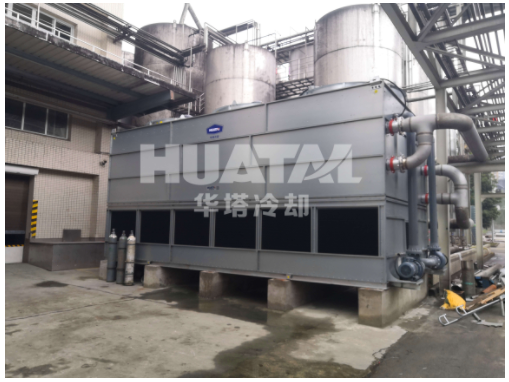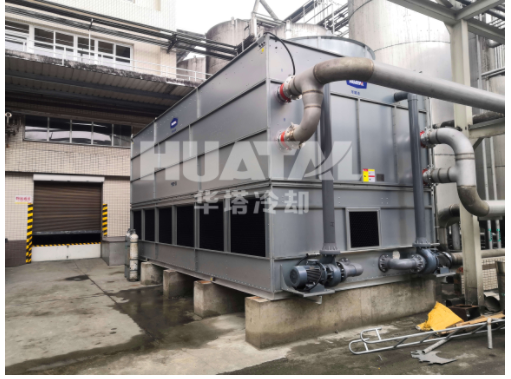Jiangsu Huatal Cooling Technology., Ltd.
Complimentary Samples For You And Technical Consultation At Your Convenience
The air inlet of various types of closed cooling towers may freeze. The air inlet of natural ventilation counterflow closed cooling towers usually freeze at the lower edge of the inner wall of the tower, or hang ice at the edge of the retaining eaves inside the tower. When it is light, it forms a thin ice curtain; and when it is serious, it freezes with column A of the tower to form an ice wall in the cross-flow cooling tower. There is ice in the inner edge of the louver of the inlet of the cross-flow cooling tower. Because the hard part of the cooling tower is water leakage, a large area of ice is formed on the side of the inlet column and the louver. The main reason for the intake icing is that the water around the packing of the cooling tower is too small, and a small amount of water flowing down the wall of the cooling tower stays in the intake for a long time. Upper edge or spout edge.

If the heat load and water quantity of the whole tower is too small, the bottom of the pouring water packing of the whole tower will hang ice; Some use zoned water distribution cooling tower, because of uneven water distribution, will make part of the packing frozen. When the casting density is small, the cold air will invade first. In other areas with low watering density, it is easy to form freezing damage to plums, such as water tank blockage and damage. If the nozzle is blocked and the water tray falls off, it is easy to cause local freezing damage. If the local water of the pouring filler is too small or the pouring filler column is close to the air inlet, it is easy to cause the packing supporting beam column and part of the packing to freeze.
An ice cone is formed on the inner and outer edges of the rigid ring at the top of the cooling tower. Due to the accumulation of water vapor, natural ventilation is carried out. In the mechanical ventilation cooling tower, the effect of the secondary tower part of the dehydrator is poor. With the air out of the tower, water drops fly out of the tower and fall on the platform on the top of the tower and the exhaust pipe of the fan, causing ice. The high efficiency dehydrator and the double wave dehydrator installed in the packing high wind speed area can eliminate the floating drops and solve the icing problem on the top of the tower.
Because water separators are not installed or are ineffective, large drops of water fall on the surrounding ground, or vortices at the air intakes carry some of the droplets out of the tower and onto the ground. When multiple grilles in cooling towers are ventilated mechanically, some grilles will not operate in winter. Water vapor from the running tower falls on the fan blades in the stopped tower and accumulates on the surface area of these blades, so it freezes. If the blade on the ice from melting, static, dynamic balance of the blade will be out of balance, serious when bow | fan vibration and damage of the tower structure.

When cooling towers are out of service in winter, the water-filled circulation ditches, pressure lines and valves can freeze because the water does not flow and cannot be replenished. The lateral frost heave force caused by freezing can reach 0.2 ~ 0.3MPa, causing damage to the equipment.
Copyright © 2019 Jiangsu Huatal Cooling Technology Co., Ltd. | All Rights Reserved
Hello, please leave your name and email here before chat online so that we won't miss your message and contact you smoothly.